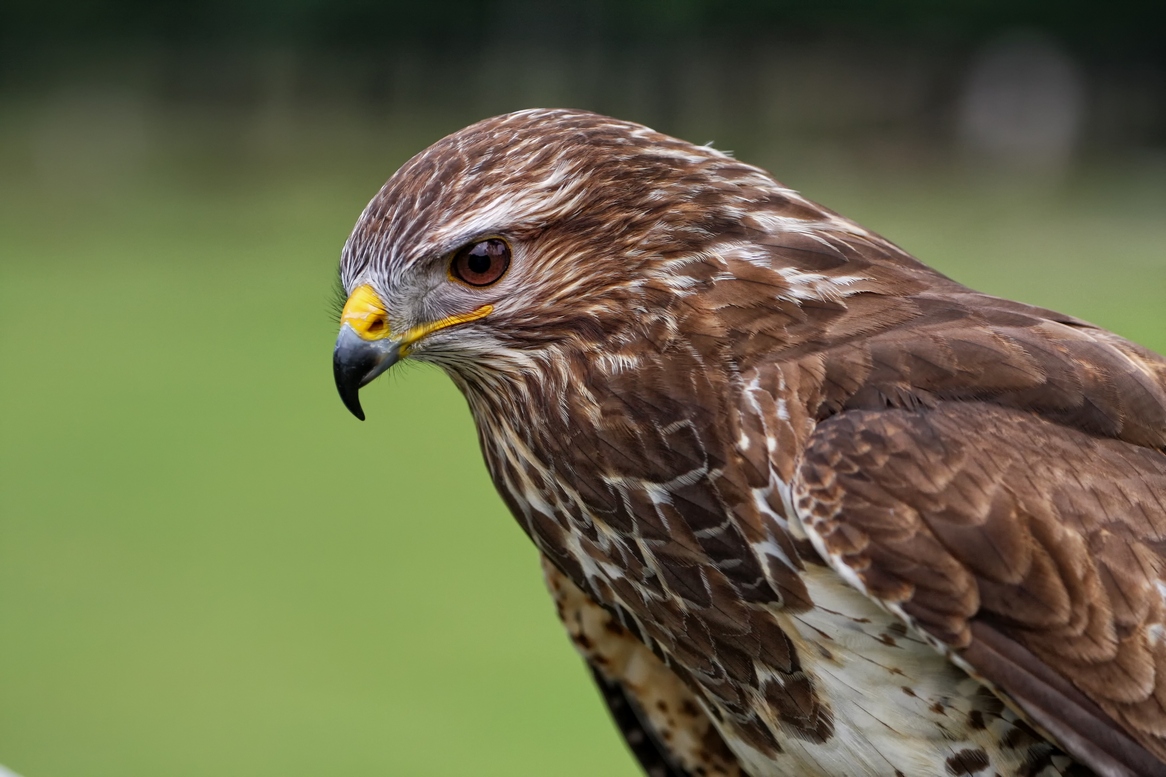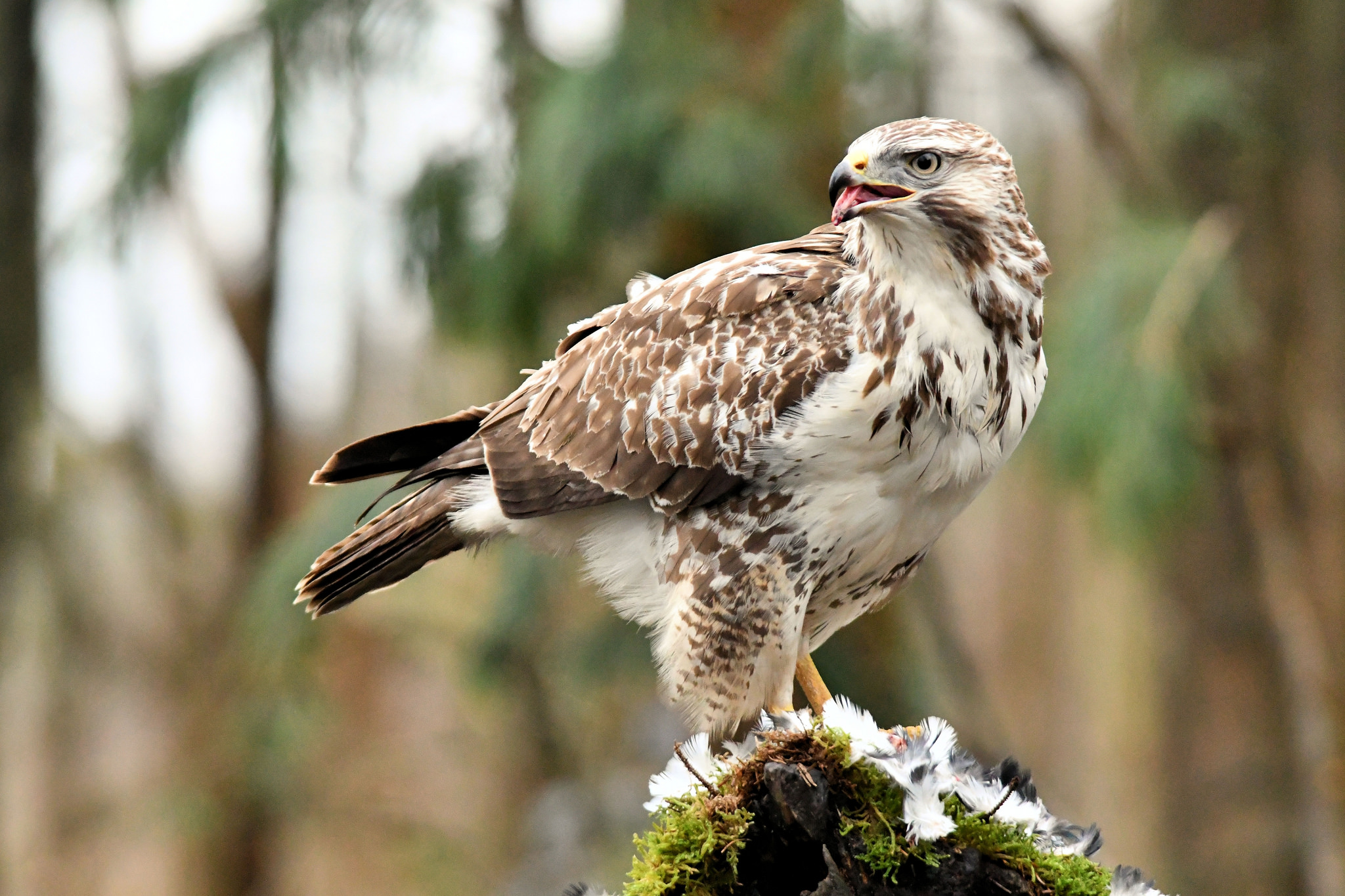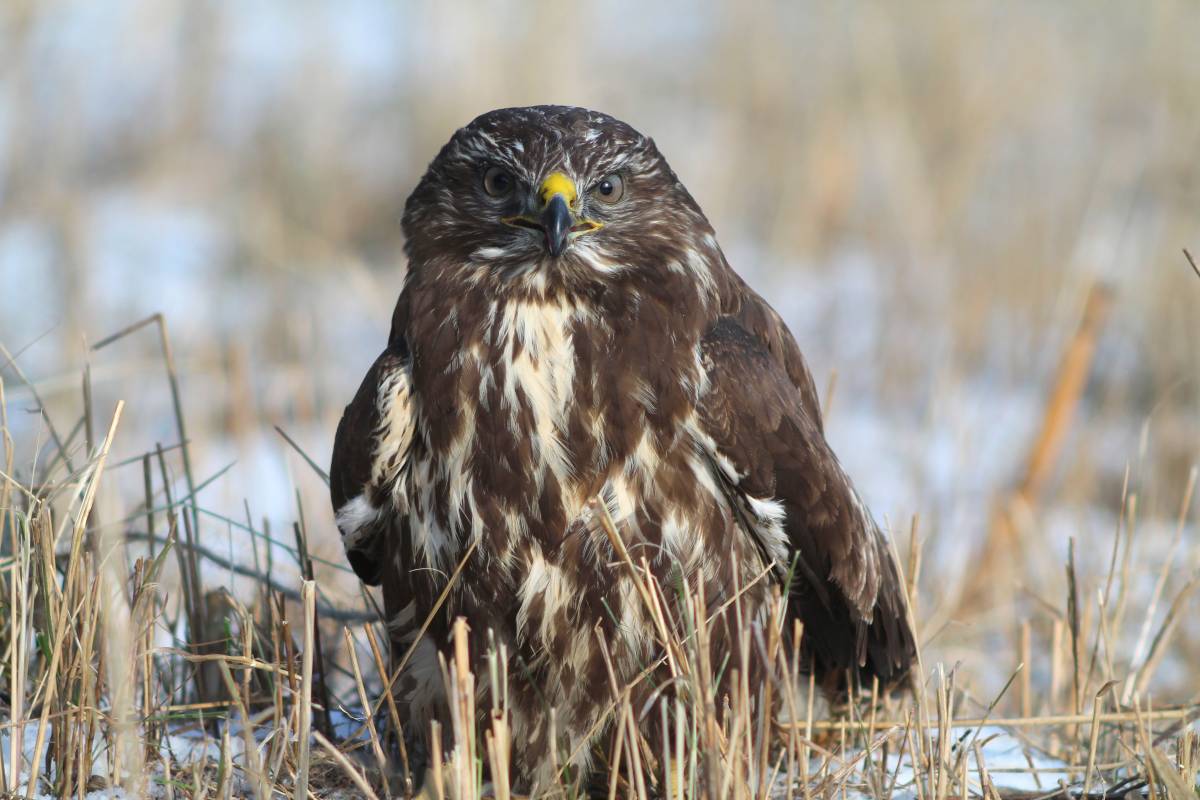Common Buzzard is one of the most common birds of prey, representing the family Hawks. Otherwise, the individual is called "Sarych" (buteo), it is known as an ancient predator.
Material Content:
Description and features of the bird
Buzzards are popularized throughout Europe and in the forests of Asia. It is easy to confuse them with other birds, since in their color they have similarities with golden eagles, eagles and other massive birds. Researchers are still studying buzzards. That is why their classification is constantly changing.
Description of the type of bird:
- This species has average dimensions and reaches 55 to 60 centimeters in length.
- The wings reach approximately 45 cm, and their wingspan is from 100 - 125 cm.
- Its weight is 578 - 1550 grams. Females are much larger than males.
- It is almost impossible to see buzzards with the same color, they are diverse. Sarych is a multi-colored bird. When the buzzard is in flight, one can observe bright spots on the wings. Some individuals are painted in black and brown with plain lines on the tail. Other species have gray-brown tones, on which black specks of various sizes appear.
- Paws are light yellow in color, and the beak is blue.
- The eyes are dark red, in the process of growing up, they turn gray.
Buzzards have sharp eyesight and good hearing. They are endowed with a special sense of touch, and wonderful instinct. And the buzzards are also distinguished by their intelligence, which in some cases is not inferior to the human.
Habitat and habitat
Buzzards prevail throughout Europe, in Africa, Iran and in the forest belts of Asia. The habitual habitat for them are forests and meadows. They hunt, as a rule, in open areas.And only in rare cases, under certain weather conditions, they can earn their livelihood in a confined space.
In winter, birds fly to southern countries, where there is always the opportunity to get food in the right amount. Buteo can live in pairs or singles. Birds never let strangers into their possessions. The plots occupied by these individuals can be found in fields, pastures and forests.
The voice of a common buzzard
A bird of prey also has an extremely rare voice, which cannot be confused with any other. A cry is like a tearful and lingering meow. That is why their name comes from the word "buzz." As, for example, in the case when a child drawls something from adults. It is worth noting that the voice in females is much lower than in males.
Bird of prey
The buzzard diet is diverse. When birds fly from the south, they are very hungry. It was at this time that crows and jackdaws often got from predators. Buzzards feed on a variety of rodents, hares, and small amphibians. And they also hunt chickens, blackbirds and partridges. Buzzards can also kill vipers, but, unfortunately, nature did not reward them with immunity from snake venom. Therefore, they may die from a bite. Sometimes they are able to steal chicks from nests and there is carrion. Buzzards hunt in two ways:
- In the first case, birds can fly slowly above the ground with spread wings and look for suitable prey. Seeing food, they quickly fly to it, pressing their wings tightly to the body, but when they approach the ground, they straighten them and grab food with lightning speed.
- The second way - the buzzards sit on a tall tree or rock, peer carefully, looking closely at an object suitable for attack. When the target is discovered, they immediately break down and fly towards it.
Important. Observations showed that buzzards eat about 60 mice per day, and up to 4000 during the summer season.
This bird of prey cannot be confused with other birds. Sarych, when he sits down, he always picks up one paw and cringes slightly. At this moment, he not only rests, but also looks closely at the surroundings in order to find his prey.
Breeding and offspring
Buzzards create a family for life. They are monogamous birds. In the spring, by the end of March, they begin their mating flight, performing various acrobatic movements in the sky, dancing in a peculiar way. At first, the couple whirls, making loud noises, and then the male grabs a branch or some prey and presents it as a presentation to his partner. After the ritual, they fly to build a place for posterity.
Usually they look for a tall single tree, choosing it among many others. Nearby must be deciduous trees. Together they build a large nest with a diameter of about 1.5 meters. The dwelling is made of thick, dry branches, the walls are lined with moss or knots, and the bottom is lined with thick grass or some other suitable material. A family can use one nest for five years.
In late April, the female lays 3-5 white eggs covered with gray spots. Throughout the month, parents take turns hatching them and waiting for the cubs to be born. After the chicks hatch, the mother sits with them for days on end, warming her with warmth, and the father procures food for the family. First, the female is always the first to eat, and only then the babies. When the cubs grow up, now both parents go to get food, as the demand for food grows with the growing offspring.
Small buzzards are gray in color and are covered in down. When they reach four weeks of age, they begin to successfully and effortlessly share food with each other. After eight weeks, the buzzards learn to fly and leave their home, but for a month and a half the parents tirelessly take care of them. At the onset of autumn, the mother and father expel the young from the nest, and the cubs begin to live independently.And also in the mating season, males arrange fights with other birds because of the females, begin to care for their chosen ones in order to attract attention.
It is interesting that if the chicks of the family did not work out, then the female can easily lay more eggs per season.
Life span
It is known that the lifespan of buzzards in normal conditions is 24–26 years. And the maximum duration in captivity is 35 years. However, it all depends on external factors:
- the presence of a sufficient amount of food;
- lack of adverse weather conditions, etc.
Interesting Facts
It is worth exploring some interesting details about the wayward bird:
- The number of buzzards located in a particular territory always depends on the prevalence of food on the ground. Couples start offspring only if they are confident in the real possibilities of feeding him. There should be a sufficient number of rodents and other prey on the ground. During fasting, they do not hatch at all, and some leave fewer eggs.
- Buzzards, like all ordinary birds, love to sit on high-voltage wires. Therefore, many birds die from electric shock. To save the birds, they began to build safe supports.
- In Scotland, buzzard is often mistaken for a tourist eagle. Inexperienced lovers confuse them with rare golden eagles, as the colors and appearance of individuals are very similar.
- Buzzards have their own territory not only on land, but also in airspace (up to three hundred meters from the ground). If someone else encroaches on this site, then they begin to attack him and try to drive him out of their place.
- In one day, the bird eats up to 35 rodents, and in a year this figure can reach up to 12,500. Thus, they benefit the outside world, as they save the earth from harmful animals.
- In the Moscow region, this species of feathered predators has long been under protection and is listed in the Red Book of Moscow.
Thus, buteo is a mighty and proud bird of prey. Great savvy, cunning and courage are characteristic of birds. They are responsible for the reproduction of offspring. But every year the population of these birds decreases. The reason for this is not only the lack of a caring attitude of man to nature, but also significant climatic changes.

















